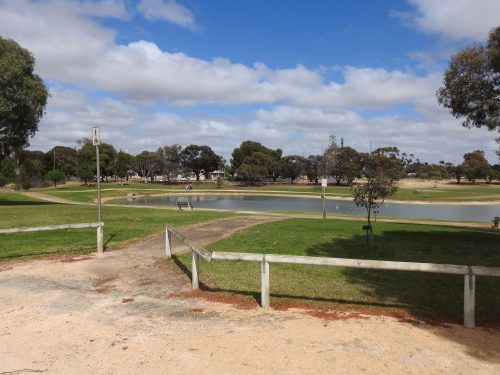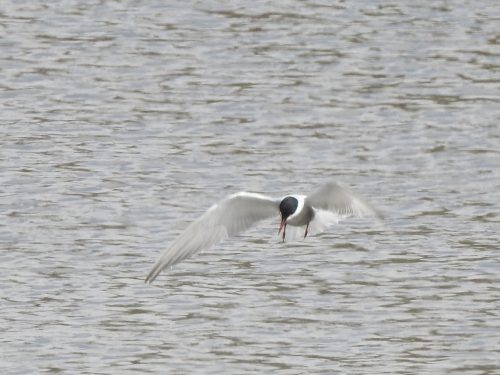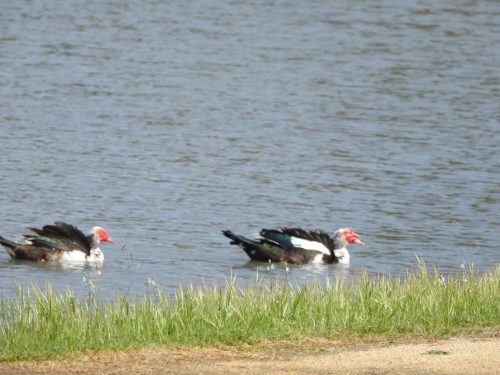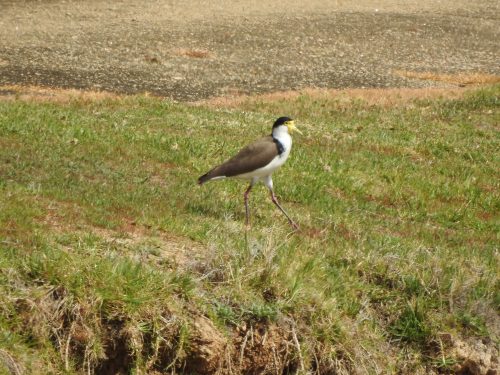Back on the road again
It has been a while.
It has been far too long since I last posted an article here on this site. It has not been an easy year for me so far (read here to find out why). But now I am back and keen to post many more bird photos here, as well as relate some highlights of my travels and birding experiences.
A special birthday
Last week my family celebrated my grandson’s 10th birthday, so I just had to come over from South Australia to Sydney for the occasion. It’s a 14 hour, two-day drive so it is not a trivial undertaking. This was my first big trip by myself, so I decided to take three days and take it easy. I am pleased that I did because I saw a few birding highlights along the way. More of that in coming posts.
The birthday party was held in a park near my son’s home and it was very successful – despite the rain trying to spoil it. The invited guests were determined to have a good time, and they did not to let the rain spoil their fun. It was a huge success and the food was also great. Love party food.
Lake Roberts, Lameroo
When I left home in Murray Bridge last week, my first stop was at Lake Roberts on the edge of Lameroo, a small farming based community in the eastern part of South Australia. I stopped for a break and a cup of tea. As I was having my morning tea, I made a list of the birds seen and heard. I also grabbed my camera and took a few photos. The photo above is a general shot of the artificial lake. Behind me is a small caravan park and to my left is a picnic area with tables seats covered by a roof.
Bird list
My bird list for the twenty-minute stay is not long, nor is it exciting – except for one bird.
Galah
Australian Magpie (both white-backed and black-backed)
Welcome Swallow
Singing Honeyeater
Red Wattlebird
Willie Wagtail
Crested Pigeon
Magpie-lark
Whiskered Tern
It is the last species which grabbed my attention.
I have visited this spot on many occasions on my trips to and from Sydney. This is the first time I have recorded a Whiskered Tern in this spot, and although it is a widespread species throughout much of Australia, it was an unexpected extra on this occasion. The photos are not great, unfortunately. Many of the photos were taken at extreme zoom, and are therefore not great.
The shot above is the one occasion that the solitary bird came to rest on the small beach along the edge of the lake. For the rest of the time, it kept flying around the perimeter of the small lake, diving into the water every ten seconds or so. I am not sure what it caught to eat, but it was quite persistent in this behaviour for most of the time I watched it. One of the better photos of it flying is shown below.
(Note to self: try to master photographing birds in flight.)
Other species
I didn’t have much time to photograph all of the other species present on this visit. I have shown some of them below. One species not listed above is the Muscovy Duck. This is a feral bird found in a few places around Australia, usually near farmhouses, dams and artificial lakes and ponds. It is native to Mexico, Central and South America. Feral populations exist in many countries, mainly as a result of releases by people or escapes from farms and gardens.
On the road again
We are on the road again. To be more precise: we have been on the road and are now in Sydney for about a month staying with family for Christmas. We left just over a week ago and travelled from home in Murray Bridge, South Australia, to my son’s home in Artarmon in two days of many hours in the car. Although the distance is just over 1300km we enjoy the journey, taking note of the changing environments as we go.
All the way we are on the lookout for birds. At certain points along the way we stop for meal breaks, or to refuel. On these occasions I usually jot down the birds observed during our break. Additional lists are sometimes made as we drive along, usually when my wife is driving. If either of us sees something special or out of the ordinary I will make a note of that too.
During the morning of the first day we saw many of the usual species seen along the road from Murray Bridge to Ouyen in Victoria. This is predominantly mallee eucalypt country used for wheat and sheep farming. Along the way we saw several family groups of White-winged Choughs. It always amuses me that they do not merely walk or hop along the ground; it’s more of a swagger. If pressed hard they will fly off, their white wing patches showing up clearly. This easily identifies them from the many Australian Magpies and Little Ravens along this stretch of highway.
Also along this stretch I am also on the lookout for the way the magpies change from the white-backed sub-species to the black-backed. Intermediate hybrids are also worth looking for. As for the ravens it is a harder task. The further east one travels the more Australian Ravens can be found. The only sure way of telling them apart from the Little Ravens is to hear them call, not a practical solution driving at 110kph.
Along this first leg of the journey we also saw a few Grey Currawongs as they glided across the road in front of us, many Willie Wagtails fluttering around in search of breakfast, the occasional Nankeen Kestrel soaring or hovering over the fields, and flocks of Galahs glowing pink in the morning sun. A highlight was several brief sightings of Dusky Woodswallows, always a nice species to see.
Morning tea at Lameroo added Welcome Swallows, Australian Wood Duck, Crested Pigeon and Magpie Lark to the list. I didn’t add the feral domestic ducks which live around the artificial lake.
Coming into Ouyen for lunch I saw the only Brown Falcon sighted on the journey to Sydney. Typically, it was perched on the pole of a telephone line. While having lunch a female House Sparrow cheekily perched on the picnic table about 30cm from my lunch. It was close enough to get a few good shots with my phone (see below).
Other species added to my growing list while we ate lunch included Spiny-cheeked Honeyeater, European Blackbird, Common Starling, Yellow-throated Miner, Singing Honeyeater and White-plumed Honeyeater.
Tomorrow: from Ouyen, Victoria to Narrandera, NSW.
Now here’s a common sight in Australia
Sydney Trip Report June 2011
Grain storage silos are a common sight throughout the cereal growing areas of Australia. Almost every small town has some and they make up a prominent feature of the landscape. On our trip to Sydney earlier this year we passed many such structures along the way. They become so commonplace one almost forgets that they are there.
Not me.
I usually give silos more than a quick glance as they flash by, checking out each one for any interesting birds perching on the building or flying nearby. Sadly I’m usually disappointed because the most common inhabitant of these artificial “cliffs” are Rock Doves (feral pigeons), usually in their hundreds. Quite often they are in the company of just as many House Sparrows.
On the odd occasion, however, I have seen Nankeen Kestrels, Black-shouldered Kites, flocks of Galahs and Corellas and even cockatoos. At Lameroo I only managed to see some Rock Doves (see photo below). It’s not a brilliant photo, but considering the silos were some 200 or more metres away, the zoom on my camera is impressive.
Sometimes one has to be content with the common, ordinary species and a not so wonderful photo.
Interesting Magpies at Lameroo
Sydney Trip Report June 2011
The various races of Australian Magpies make a fascinating – albeit confusing – study. Here in Murray Bridge, South Australia, the magpies are almost all of the White-backed variety. The further one drives east, the Black-backed magpies become the dominant race until over in Victoria and into NSW they are all Black-backed Magpies. Travelling north into Queensland or south into Victoria and the races (and amounts of black v. white change). Travel to Western Australia and the races change again. It can be quite confusing , especially when the races interbreed. Layer upon this the colour variations of juveniles and you have a recipe for a headache trying to identify which race you are seeing.
On our trip to Sydney earlier this year we stopped for morning tea at Lameroo in eastern South Australia. In the picnic grounds of Lake Roberts I took the photos on this post of a nicely coloured male Black-backed Magpie (see above and below). Interestingly, it was accompanying a White-backed female (see photo below). They were feeding together. I wish I was visiting Lameroo in the coming weeks to see if these two individuals breed together, or are just being sociable (as magpies are known to do).
Special offer: A few months ago I reviewed a wonderful book about Australian Magpies called The fearsome flute players. You can read the review and order the book by clicking here. There is a special offer when you mention you heard about the book on Trevor’s Birding.
Masked Lapwings, Lake Roberts, Lameroo
Sydney Trip Report June 2011
As I wrote yesterday, we stopped at Lameroo on the first morning of our trip to Sydney earlier this year. Lake Roberts on the eastern edge of town is a good birding spot with a mixture of bush birds and water birds inhabiting this artificial wetland area. On most of my visits I have seen at least two Masked Lapwings. They feed on the grassed area around the lake and picnic area. Behind me where I took these photos is the small caravan park which is also a grassed area. Last year we saw several chicks in the caravan park, running after the adults.
We stayed at this spot for about 20 minutes while we had a cuppa and morning tea. The following is a list of birds observed during that time:
- Black-shouldered Kite
- Brown Falcon
- Nankeen Kestrel
- Little Pied Cormorant
- Muscovy Duck (introduced species)
- Masked Lapwing
- Rock Dove (introduced species)
- Crested Pigeon
- Galah
- Variegated Fairy-wren
- Red Wattlebird
- Magpie Lark
- Australian Magpie (both Black-backed and White-backed)
- Little Raven
- White-winged Chough
- Black-faced Cuckoo-shrike
Some of these were seen in the town or on the road leading into town and not at the lake.
















